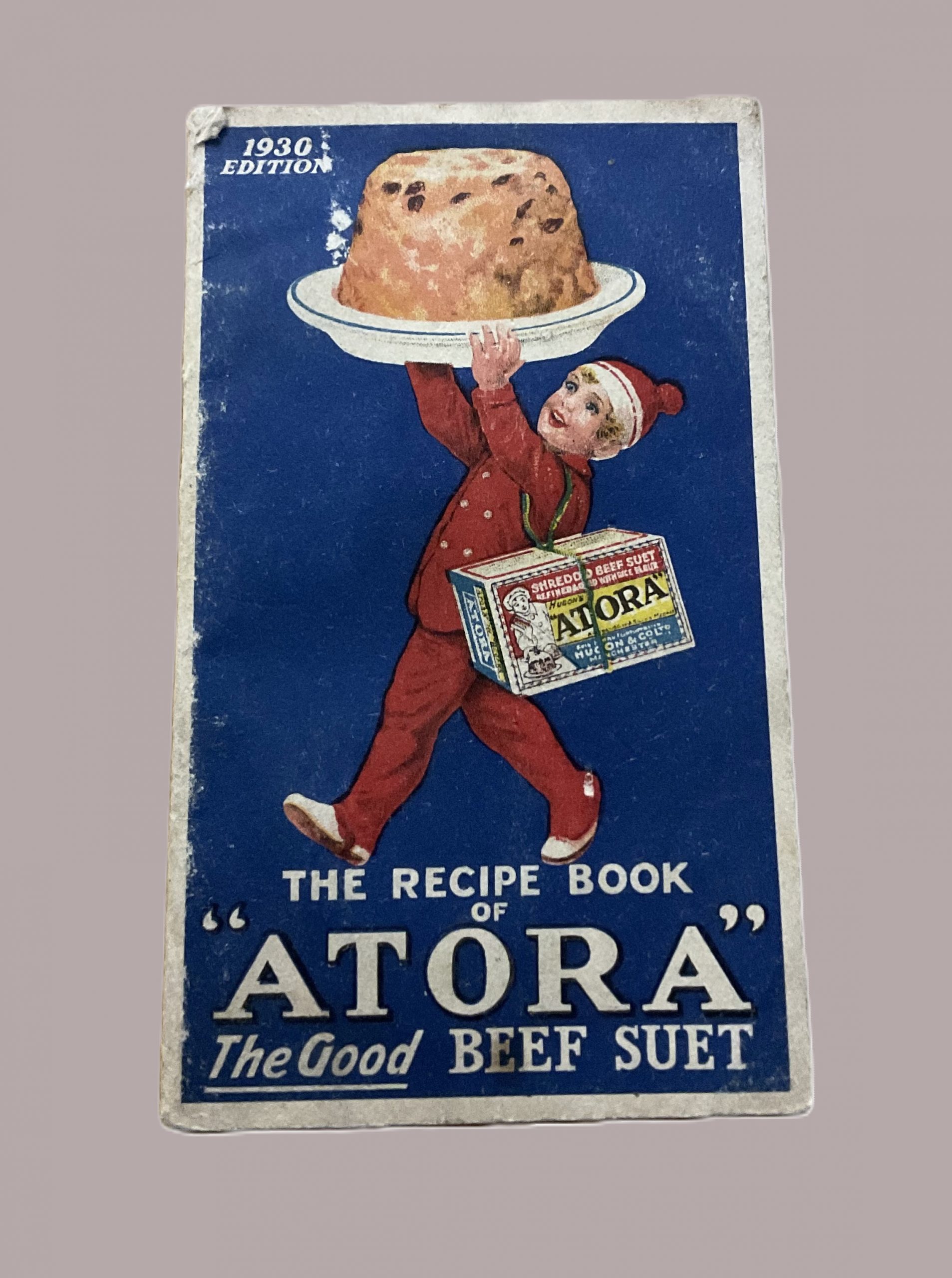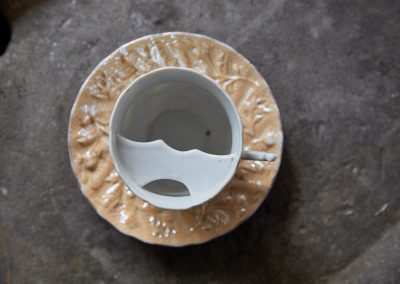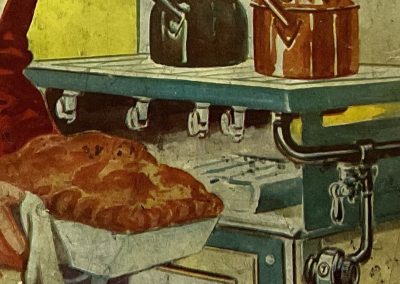Selection of recipe books from the 1930s
Richmondshire Museum, North Yorkshire
Vintage cookery book covers can reveal a lot about their time. They show culinary trends and design preferences, but can also help us to understand cultural values such as gender roles or attitudes to family life. These cookery books all date from the 1930s and were each developed to accompany and promote another product.
Dyson’s Self-Raising Flour book (1933)
In a time before television chefs and YouTube cookery demonstrations, learning to cook was a vital household skill for women, especially since almost everything had to be prepared by hand from raw ingredients.
Often known as the ‘hungry thirties’, this interwar period was a difficult time for many. Food poverty was more likely to be experienced among households without a male figure or with a father out of work and conditions were often worse in the North of England. During the decade, national attention was placed on increasing nutritional intake, through the introduction of schools meals and school milk. Recipe books also provided support so that ingredients weren’t wasted on failed cooking attempts.
The Dyson flour book was one of many created by flour producers to give clear guidance about how to achieve the best results with their product, whilst encouraging the use of their own brand of flour and promoting brand loyalty. It uses patriotic imagery and colours to promote its brand and also includes a slogan.
Round-the-Clock cookery book (1935)
Cookery books reveal a range of experiences.
Not everyone experienced financial difficulties during the 1930s. A wave of new cookery books entered the market to accompany the fashionable new gas cookers of the 1920s and 30s.
The ‘New World’ cookers claimed to be the most efficient gas cooking appliances globally but required housewives to get used to a new way of cooking.
The Recipe Book of Atora, the Good Beef Suet (1930)
From 1930, this cookery book is specifically designed to showcase a range of ways to use suet. Atora shredded beef suet had been developed in 1893 as a way to speed up the making of suet dumplings.
Suet is a type of animal fat that was traditionally used to make puddings, pastries and mincemeat.
This book feature a seasonal image to connect suet in customer’s minds with Christmas, as the red-coated figure raises aloft a Christmas pudding.
Look at the presentational features used on this cover, including the use of capital letters, italics and underlining to make key words stand out.
Activity coming soon…
Talking Points
Look closely at the ‘Round-the-Clock’ cookery book. What is the woman looking at? What impression do we get from this book cover about the role of women in the 1930s?
Can you see the name of the gas cooker? Do you think this cover would encourage couples to purchase the cooker?
Why do you think the books are stained?
Do any of them look appealing to you? Why/why not?
How can you tell that they are from the 1930s?
What symbolism can you find on the Dyson book. Does this surprise you? Do you think it would help sell flour?
Can you guess what ‘suet’ is used for from the recipe book? Have you used suet before? Do you think the Atora book would be useful?
Can you imagine any contemporary cookery books being in a museum? Why aren’t they in a library instead?
Vocabulary
Symbolism: the use of symbols (including images or colours) to represent something
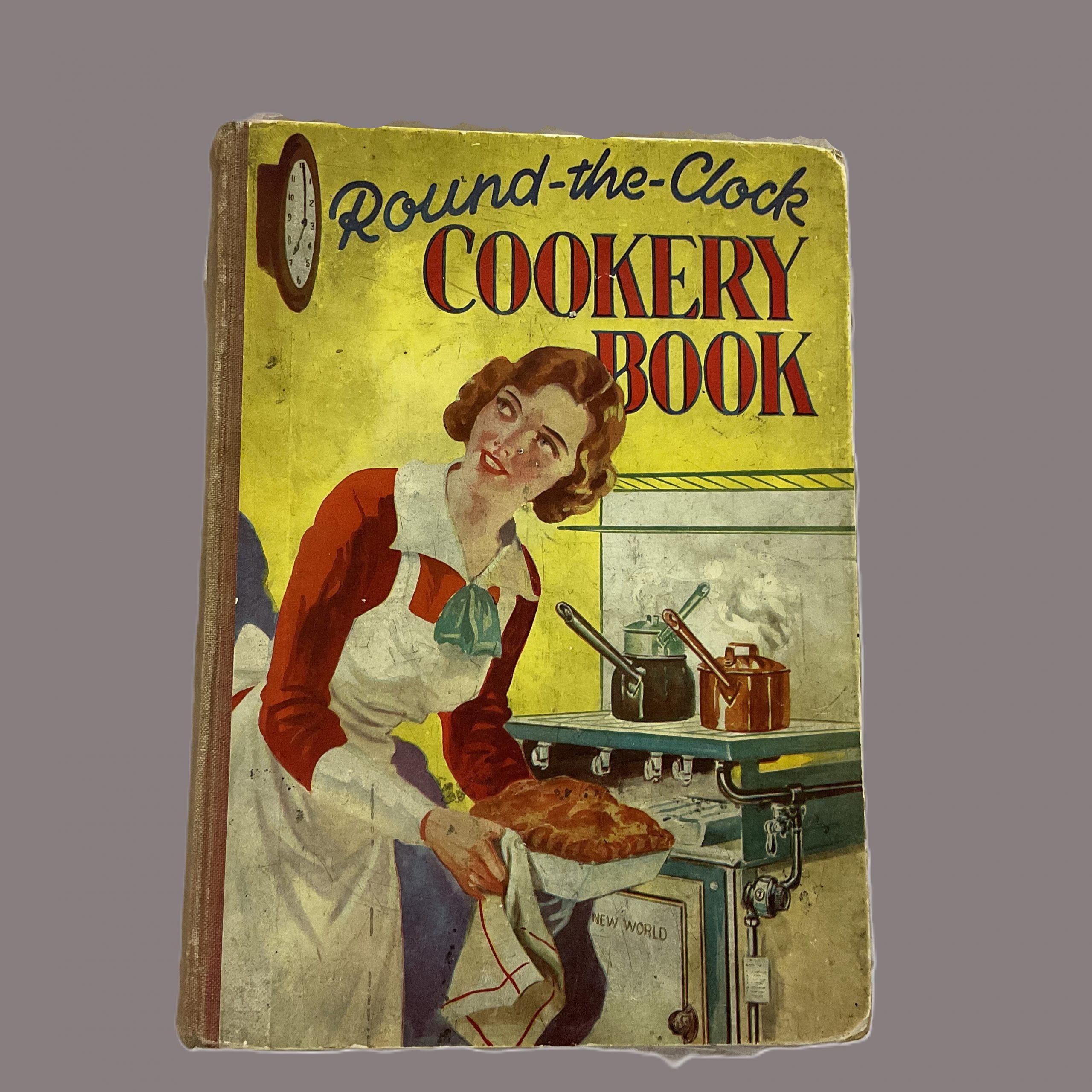
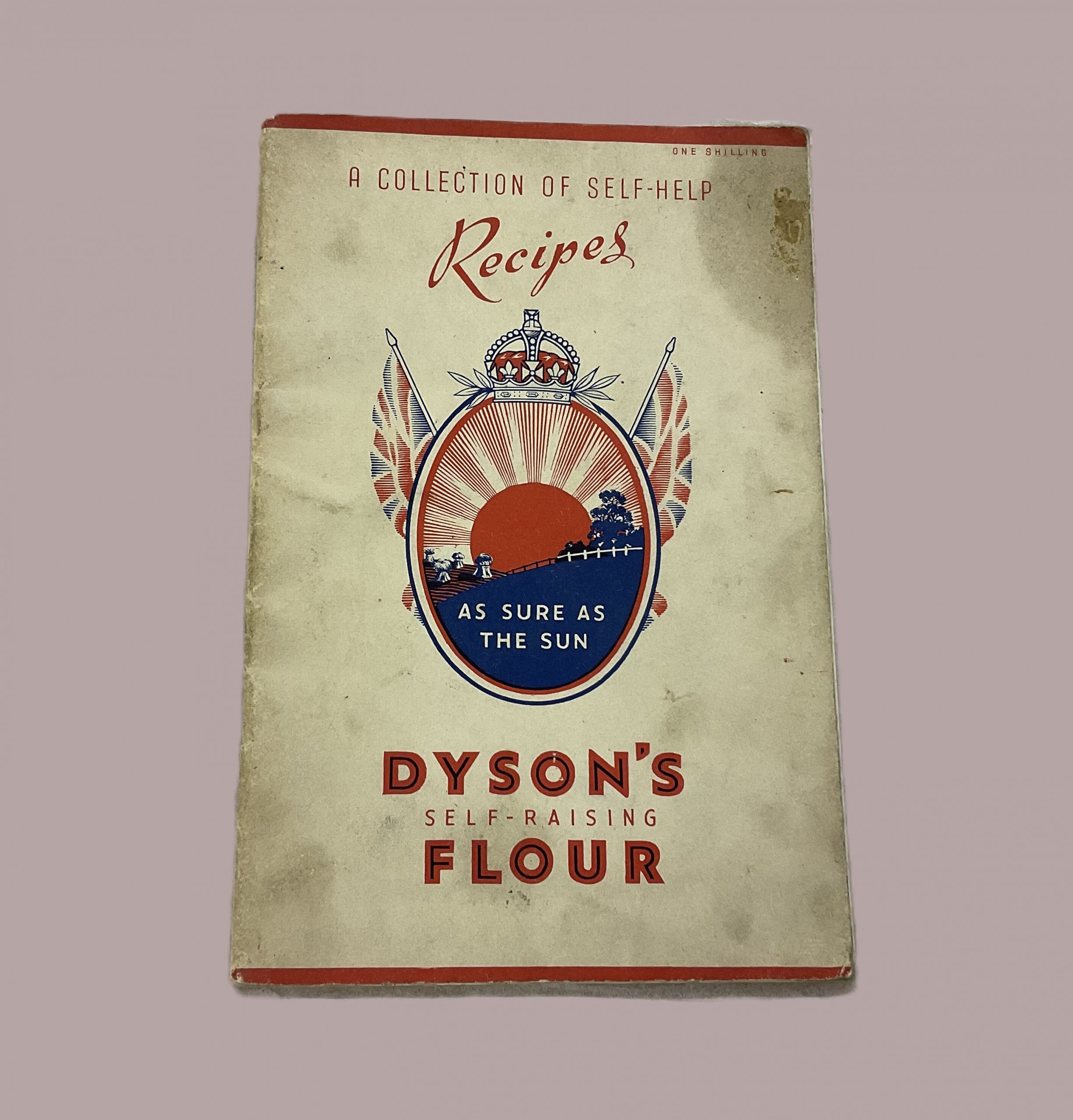
Take It Further
Hotseat
Interview the owner of one of the cookery books about the meal they have prepared. Have they enjoyed cooking? How long as it taken? Who did they cook for?
Compare
Compare the representation of family life on the Round-the-Clock cookery book with the relaxed painting of the artist’s daughter in 1935 in the painting ‘Ann at Breakfast’ by Thomas Carr (1909 – 1999). It is part of collection at The Mercer Gallery, Harrogate. One shows food preparation and one show a family mealtime (breakfast).
Do you think these 2 sources complement each other when learning about family life in the interwar years? Which source do you think gives us a more accurate representation?
You could also take a look at food packing from the interwar period explore another way that families were presented at this time.
Hands on History
You can find out about every day life and food by exploring a range of heritage ‘shops’ in museums across North Yorkshire, including at Richmondshire Museum, Ryedale Folk Museum and Beck Isle Museum in Pickering.

Museum Location

